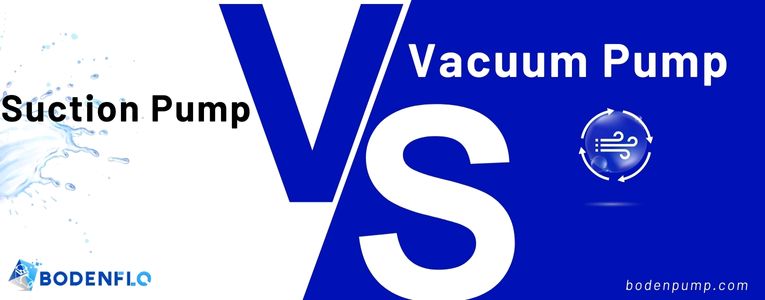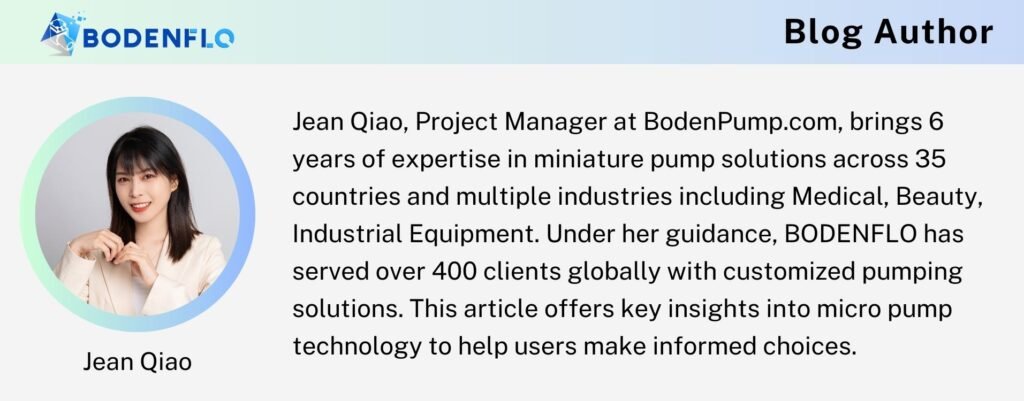
When selecting the right pump for your application, the choice can often be daunting. The terms "suction pump" and "vacuum pump" are frequently used interchangeably, leading to confusion. But understanding the differences between these two types of pumps is crucial. As someone who’s been in the industry for years, I can tell you that making the right choice is vital for efficiency and performance.
So, what exactly sets a suction pump apart from a vacuum pump? The difference lies primarily in their function and application. While both pumps create areas of low pressure to move fluids, a suction pump relies on atmospheric pressure to draw liquids, whereas a vacuum pump removes air or gases from a sealed environment. These distinctions impact their use in various industries, from medical devices to industrial machinery.
Want to ensure you're using the right pump for your device or project? Let’s explore their differences in depth—so you can avoid missteps and optimize performance.
What Are the Primary Functions of a Suction Pump?
Suction pumps are designed to move liquids by creating a low-pressure area that draws fluid in. They rely heavily on atmospheric pressure to push the liquid into the pump. This type of pump is commonly used in situations where fluid needs to be transferred from one place to another, such as in wells, aquariums, or even medical devices.
How Do Suction Pumps Work?
In simple terms, a suction pump operates by creating a partial vacuum that allows atmospheric pressure to push fluid into the pump chamber. This makes them ideal for moving liquids in scenarios where the fluid level is above the pump.

One of the common uses of suction pumps is in irrigation systems, where they efficiently move water from reservoirs to the fields.
In industrial fluid handling, suction pumps are also used in low-pressure cooling circuits, inkjet systems, and peristaltic transfer systems.
What Are the Key Roles of a Vacuum Pump?
On the other hand, vacuum pumps are specifically designed to remove air or gas from a sealed environment, creating a vacuum. These pumps are vital in industries where low-pressure environments are necessary, such as in laboratories, manufacturing, and even space exploration.
Why Are Vacuum Pumps Important?
Vacuum pumps are essential when you need to maintain a controlled, air-free environment. For example, in the medical field, vacuum pumps are used in devices like suction machines during surgeries to remove fluids and maintain a clear operative field.

These pumps are also crucial in the semiconductor industry, where they help create the low-pressure environments necessary for various manufacturing processes. In automation and robotics, vacuum pumps enable precise gripping and pick-and-place movement using vacuum suction cups. Discover more about the importance of vacuum pumps.
How Do These Pumps Differ in Design and Construction?
The differences between suction pumps and vacuum pumps extend beyond their functions to their design and construction. Suction pumps are generally simpler, focusing on moving liquids. Vacuum pumps, however, are more complex, designed to remove gases and maintain a vacuum.
Structural Differences
Suction pumps often consist of a simple mechanical system that relies on a piston, diaphragm, or centrifugal force to move liquids. They’re straightforward, cost-effective, and easier to maintain.
Vacuum pumps, however, often require more robust construction due to the need to handle air or gas removal. They might include rotary vanes, pistons, or diaphragm systems, and they need to be airtight to maintain the vacuum created.

At BODENFLO, our vacuum pump models are oil-free, maintenance-free, and designed for continuous duty cycles.
In Which Applications Are These Pumps Used?
The applications of suction pumps and vacuum pumps vary significantly due to their distinct functionalities. Understanding where each type excels can help you make a more informed decision.
Suction Pump Applications
Suction pumps are commonly used in scenarios where fluid transfer is required. They are often found in domestic water systems, medical suction devices, and even in certain automotive applications. Their ease of use and reliability make them a go-to choice for simple liquid transfer tasks.
Vacuum Pump Applications
Vacuum pumps, with their ability to create low-pressure environments, are vital in more specialized applications. From vacuum packing in the food industry to creating controlled environments in laboratories, these pumps play a crucial role in processes where air must be eliminated. Learn more about pump applications.
In environmental gas sampling, micro vacuum pumps help collect precise air samples for analysis, especially in portable monitoring instruments.
A Common Confusion: Suction Pump vs. Vacuum Pump
You're correct in highlighting a common source of confusion. In everyday language, especially among non-specialists, the terms "suction pump" and "vacuum pump" are sometimes used interchangeably. This is because a vacuum pump does indeed create suction by removing air from a chamber, leading many to associate it with the general concept of a "suction pump."
Suction Pump Vs. Vacuum Pump Comparison
| Criteria | Suction Pump | Vacuum Pump |
|---|---|---|
| Medium Handled | Liquid | Air or gas |
| Function | Draws liquid using atmospheric pressure | Removes air/gas from a sealed system |
| Pressure Range | Low to moderate | Low (vacuum levels from -30kPa to -90kPa) |
| Common Mechanism | Piston, diaphragm, centrifugal | Rotary vane, diaphragm, piston |
| Typical Applications | Water transfer, aquariums, medical suction, irrigation | Lab vacuum, automation, gas sampling, packaging |
| Energy Efficiency | High (simpler design, lower consumption) | Moderate to low (depending on model) |
| Complexity | Low (simpler structure) | High (requires airtight construction) |
Understanding the Context
However, it's crucial to differentiate between the two based on the specific application and the medium involved—whether it's air, gas, or liquid. When someone refers to a "suction pump," they might be talking about a device designed specifically for moving liquids, like a water pump. But if the task involves removing air or gas to create a vacuum, a vacuum pump is what’s actually required. This distinction is important to avoid misapplication and to ensure the right equipment is used for the job.
Which Pump Should You Choose for Your Needs?
Choosing between a suction pump and a vacuum pump depends largely on the specific requirements of your application. If your goal is to move liquids efficiently, especially from a higher level to a lower one, a suction pump is likely your best bet. However, if you need to create a vacuum for processes such as degassing, distillation, or maintaining a controlled environment, a vacuum pump is essential.
Factors to Consider
Consider factors like the medium you’re working with, the environmental conditions, and the precision required. Suction pumps are generally more affordable and easier to maintain, making them suitable for less demanding applications. Vacuum pumps, while more complex and costly, are necessary for high-precision tasks where removing air is critical. Get expert advice on pump selection.
👉 Not sure which to choose? Contact BODENFLO and we’ll help you decide.
How Does Energy Efficiency Compare Between These Pumps?
Energy efficiency is a key consideration in selecting the right pump. Suction pumps, with their simpler design, typically consume less energy, making them a cost-effective choice for routine liquid transfer. Vacuum pumps, due to their more complex operation, generally consume more power.
Optimizing Energy Use
While vacuum pumps may require more energy, advances in technology have led to more energy-efficient models. When selecting a vacuum pump, it’s important to balance the need for performance with energy consumption to optimize operational costs.
BODENFLO’s micro vacuum pumps are engineered for low power consumption and optimized motor efficiency, suitable for battery-powered devices.
BODENFLO’s Expertise in Pump Solutions
At BODENFLO, we specialize in both micro suction and vacuum pumps, offering tailored solutions to meet your specific needs. Whether you’re looking for a reliable suction pump for fluid transfer or a vacuum pump for creating controlled environments, our products are engineered for precision and durability.

At BODENFLO, we don't just sell pumps—we help engineers solve problems.
- ✅ ISO 9001-certified factory
- ✅ Over 15 years of experience in miniature pump solutions
- ✅ Customizable suction and vacuum performance
- ✅ Used in medical devices, industrial automation, gas sampling & more
- ✅ Fast prototyping | OEM development | Global shipping
📩 Need help with your project? Contact us at info@bodenpump.com
Our pumps are commonly integrated into medical devices, environmental sampling systems, industrial machinery, and household appliances. They are designed for continuous operation, ensuring reliability and stability in even the most demanding conditions. With BODENFLO, you’re not just choosing a pump—you’re investing in a solution that meets the highest standards of quality and performance. Learn more about BODENFLO's pump solutions.
Conclusion
Understanding the differences between suction pumps and vacuum pumps is key to selecting the right tool for your application. Whether you need to move liquids efficiently or create a vacuum for specialized tasks, knowing what each pump offers will guide you in making the best choice.
Still unsure which type is right for your device or system? Reach out today—we’ll help you choose the ideal micro pump for your application.


